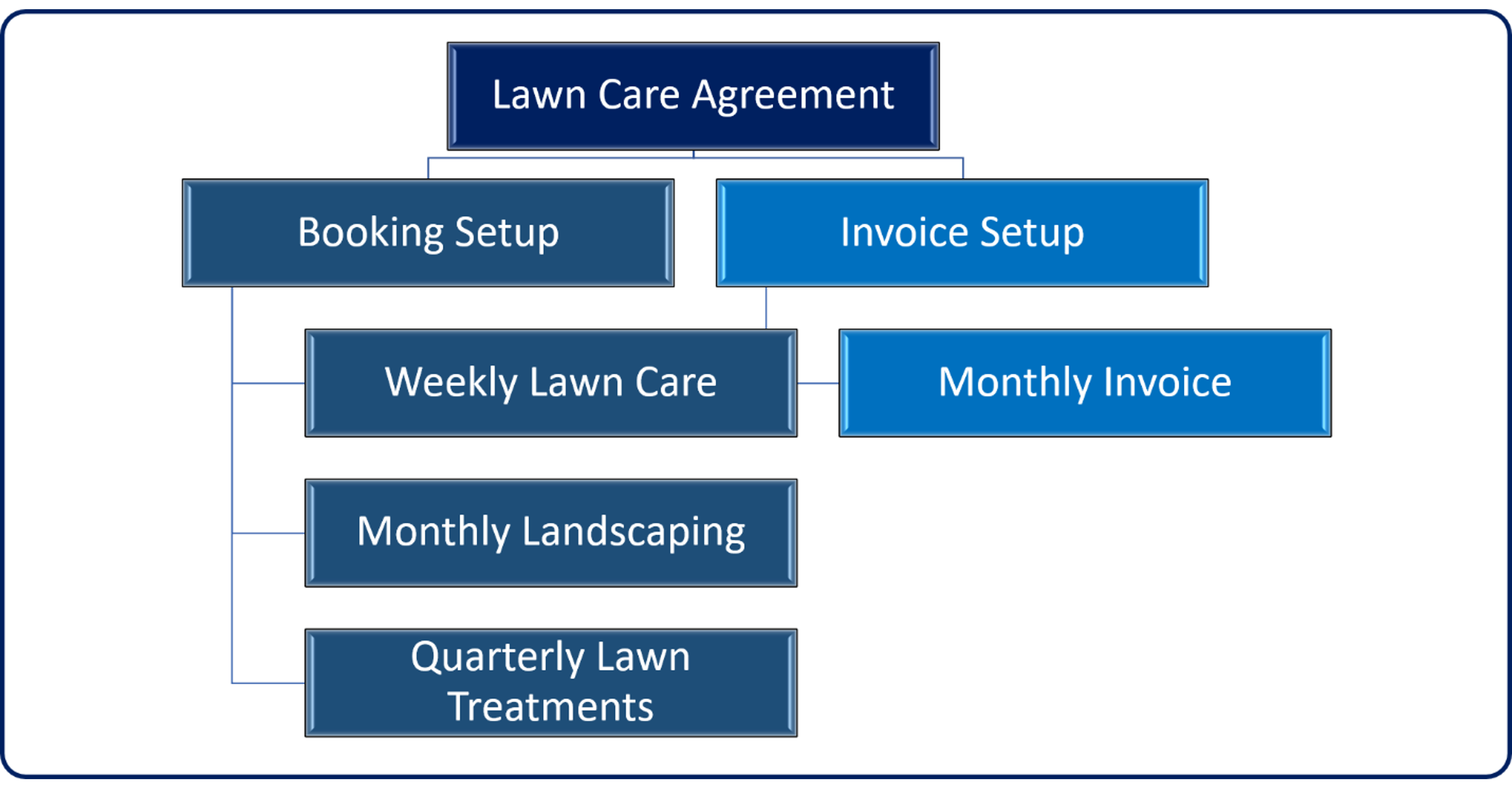Introduction
Many organizations have maintenance agreements with their customers. The service organization agrees to provide their customers with regularly scheduled service at predefined intervals. For example, HVAC company that installs heating and cooling equipment might perform preventative maintenance on different components multiple times during the year. In the fall, they inspect the furnace to ensure that it operates correctly during the winter months, and then they make adjustments as needed. In the spring, they inspect the air conditioning unit to ensure that it's ready for the summer months.
A landscaping company might provide year-round services to their customers, as follows:
Spring, summer, and fall:
Provide weekly lawn care, such as mowing grass and removing leaves and debris.
Provide monthly landscaping, such as hedge pruning and tree trimming.
Provide lawn treatments once every three months, such as spraying for pests and weeds.
Winter - Provide snow removal services as needed.
Often, in these scenarios, customers are charged a flat fee that includes all services. The customer might be billed in monthly installments even though services are being provided weekly, monthly, and every three months.
In regard to providing services to the customer, because you can't know when a snow event will take place, snow removal work orders are created as they're needed. The other work orders, such as lawn care, landscaping, and lawn treatments, need to be created and performed on regularly scheduled intervals.
Microsoft Dynamics 365 Field Service allows organizations to deliver this type of service to their customers through agreements. An agreement is a framework for automatically generating work orders and invoices at predefined intervals. One advantage of agreements is that a single agreement can have multiple booking and invoice setups defined that will generate work orders and invoices on a defined schedule.
Agreements are useful when you need to generate work orders, bookings, and invoices on a predictable and repeatable schedule, such as:
Monthly inspection for two years.
Quarterly maintenance for one year.
Monthly invoice on the first of the month for the next year.
Agreements aren't an ideal solution when the schedule isn't consistent, such as:
Schedule every three months, skip a month, and then continue.
Invoice sometimes once a month, other times every other month.
When you need more detailed tracking information on resources, equipment, tools, and so on.
The following image illustrates an example of agreements.
Throughout the remainder of this module, you'll learn about the process of creating agreements.
